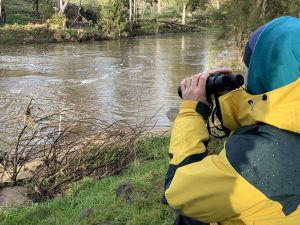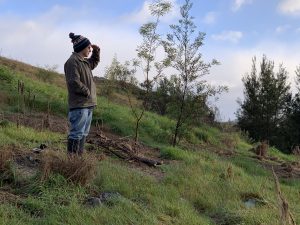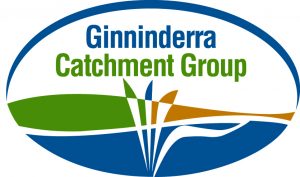With rain falling and evidence of the recent floods writ large along the banks of the Molonglo, 12 volunteers were among those who braved chilly mornings this month to take part in the annual Waterwatch platypus count.

In its seventh year, the program is aimed at measuring platypus numbers in the region and runs over four sessions during the course of a month.
Eight year old Bruno Vittorio was out with his dad Dan, clipboard in hand and said he was excited to be waiting, silent and still, to catch a glimpse. He didn’t just see a platypus.
“We saw a platypus, a heron, some ducks and black cockatoos,” he said
But what was Bruno’s first thought when he saw the monotreme?
“I thought it wasn’t real,” he said, incredulously. “I just love to enjoy them.”
Bruno Ferronato, Waterwatch Coordinator for the Ginninderra Catchment Group said after recent rain events the river levels were high making it hard to see the creatures, and was happy the group did spot one.

He said numbers seem stable at the moment, though slightly lower, with one or two platypus each year, and about four rakali (native water rats), but said we need more data to get an idea of the stability of populations.
“Habitat destruction is the biggest threat to numbers,” he said.
“Even though they’re tough creatures and can live in disturbed sites, if there are any other human threats their population will be threatened.”
He said citizen science is essential in measuring the platypus population in Canberra.
Anna MacDoland, a volunteer and biologist at ANU has participated over four years, multiple times each year.
“It’s nice to just get out in the morning and sit by the river, but also contributing to the data collection and understanding the platypus in the rivers is good,” she said.
Both as a citizen scientist and as someone who has used it in the past she said it is really important.

“It’s a really great way to contribute more data and get a better understanding of our wildlife and it’s also a good way for people to get involved and learn about nature and wildlife.”
While someone along the river tends to see a platypus during the count, Anna said there’s a tradition that you always tend to see one the week after the count.
“Just when you’re out for a walk!”
If you’d like to get involved with Waterwatch please get in touch with the Ginninderra Catchment Coordinator Bruno Ferronato. He can put you in touch with your local coordinator and tell you more about exciting upcoming events like Water Bug Blitz and the annual frog census in October. Please call 02 6278 3309.



